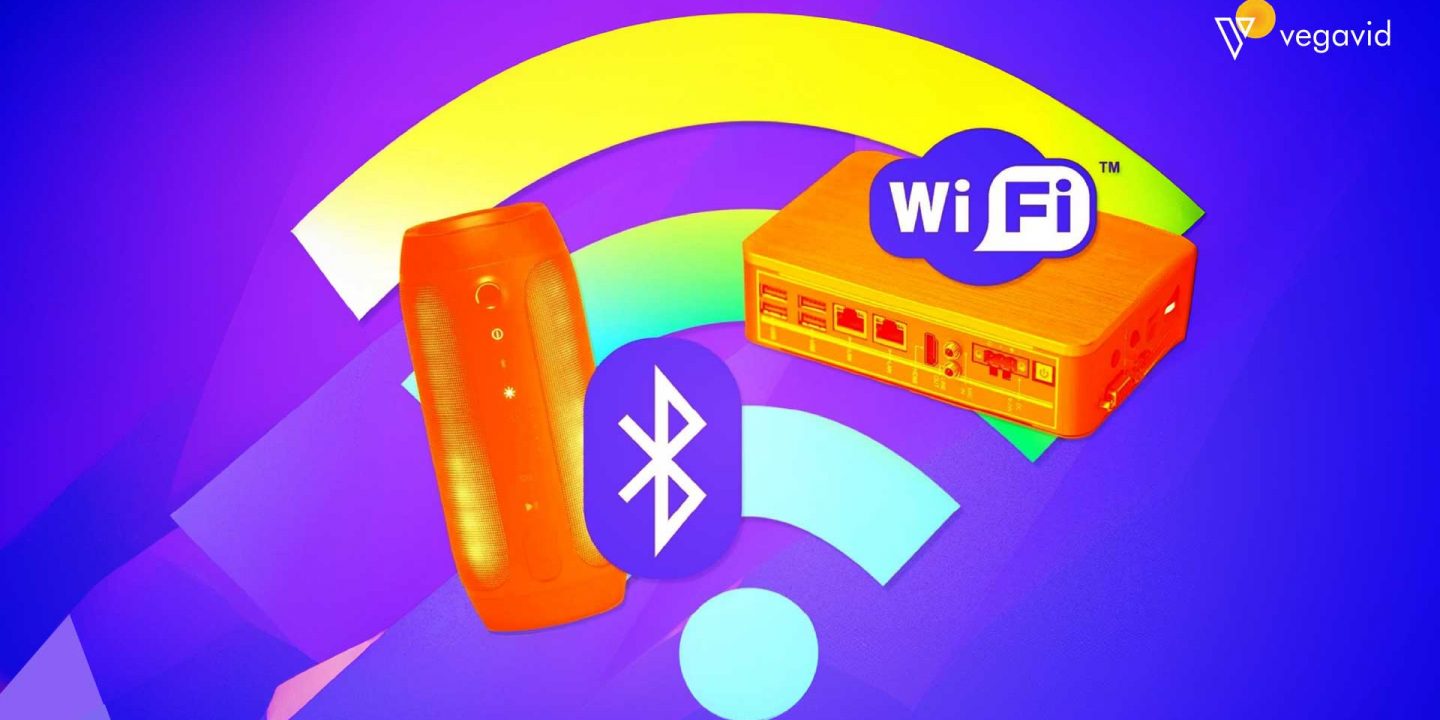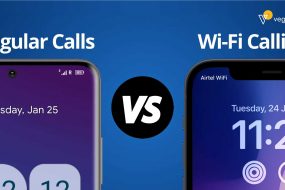
The upward thrust of the IoT era has enabled various devices to attach and talk wirelessly. However, in relation to connecting IoT gadgets, there are two predominant quick-range wireless requirements – Bluetooth and Wi-Fi. Both have their own benefits and disadvantages. This blog ambitions to comprehensively evaluate Bluetooth and Wi-Fi in key elements like range, speeds, security, strength consumption, and many others. From an IoT attitude. It will also speak about the specs of Bluetooth and Wi-Fi IoT devices as well as their compatibility necessities. The contrast will assist recognize which era is higher proper for what sorts of IoT applications based totally on precise technical and practical desires.
Bluetooth IoT Devices
Bluetooth is a commonplace wireless generation used for connecting many normal IoT gadgets like wireless headphones, headphones, clever watches, health trackers, Bluetooth audio systems, and different patron electronics. Due to its low strength requirements, many battery-powered Bluetooth gadgets can operate for prolonged periods without charge.
Bluetooth gadgets include fitness trackers, clever home sensors, and small domestic appliances. While the range of classic Bluetooth is normally quick, around 10 meters, Bluetooth Low Energy (BLE) technology has similarly reduced the power desires and prolonged the battery existence of related gadgets notably, making it very appropriate for integration into various smaller IoT products.
Bluetooth IoT Compatibility Requirements
For a Bluetooth tool to connect with different Bluetooth-enabled products, it has to observe positive compatibility requirements and requirements. All Bluetooth gadgets have to be like-minded with the Bluetooth Core Specification which defines various profiles for not unusual functions like audio streaming, file switch, and so forth. They need to enforce one or greater of those defined profiles to make certain interoperability.
Bluetooth devices also need to be licensed by means of the Bluetooth Special Interest Group (SIG) to use Bluetooth emblems and emblems. Certain regulatory certifications can also be required depending on the location of operation, inclusive of FCC within the US. Bluetooth devices generally have an identifier referred to as Bluetooth Address that must be particular. They also alternate encryption keys during pairing to make sure steady connections. Adhering to Bluetooth requirements for that reason allows a guarantee that gadgets from exceptional brands can seamlessly join and communicate with every other.
Wi-Fi IoT Devices
Wi-Fi is a popular wireless technology used to connect many IoT devices that have access to a wireless network, including smart home devices, surveillance cameras, network-attached storage devices, routers, printers, and other home appliances. Larger devices that require higher bandwidth connections like IP cameras, smart TVs, and set-top boxes commonly use Wi-Fi.
As Wi-Fi chips are low-cost, many IoT devices now come with built-in support for 802.11 wireless standards like b/g/n/ac, etc. This allows them to seamlessly connect to nearby wireless routers without any additional hardware. Wi-Fi is also useful for scenarios where devices need continuous high-speed network connectivity or access to cloud services.
Wi-Fi IoT Compatibility Requirements
For an IoT device to connect to a Wi-Fi network, it needs to be compatible with specific wireless network standards such as 802.11b, 802.11g, 802.11n, or the latest 802.11ac specifications. Devices supporting older standards may not be compatible with newer Wi-Fi routers. The device must be able to scan for available wireless networks, connect to an encrypted network using standards like WPA/WPA2 and fetch IP address configuration using DHCP. It should also be able to maintain the connection through periodic handshakes and reconnections.
Any IoT device connecting to a home or business network also needs security protocols like firewalls and VPNs to protect the primary network. Interoperability testing and certification from the Wi-Fi Alliance help ensure compatibility. Proper configuration and security best practices need to be followed for deployment.
Bluetooth vs. Wi-Fi for IoT: Feature Comparison
Here is a comparison of key features between Bluetooth and Wi-Fi for IoT:
Speed
In terms of speed, Wi-Fi has a clear advantage over Bluetooth. Bluetooth has slower transfer speeds up to 2.1 Mbps for the latest Bluetooth 5 standard. On the other hand, Wi-Fi standards like 802.11n and 802.11ac are much faster, providing speeds up to 1 Gbps. This makes Wi-Fi preferable for applications involving continuous streaming of high-definition media or large file transfers.
Security and privacy
When it comes to security and privacy, both Bluetooth and Wi-Fi use encryption during communication. However, Bluetooth provides better privacy since its short range limits interference risks. On the other hand, Wi-Fi connections may be more vulnerable if using an unencrypted public network. Moreover, accurate location tracking is possible with Wi-Fi if multiple access points are available, which could pose privacy issues. Overall, Bluetooth maintains better security for short-range IoT use cases due to its constrained coverage.
Location detection
Location detection is an important capability for many IoT applications. Bluetooth has less accurate location tracking ability since only the increasing signal strength can roughly indicate proximity. However, Wi-Fi allows more precise location services by analyzing the device’s connection strength to multiple access points. Triangulation algorithms can determine the location relative to access points’ physical positions.
Proximity detection
Proximity detection is vital for interacting with IoT devices automatically. Bluetooth has an advantage here owing to its shorter range of about 30 feet. This allows it to more effectively sense closely located objects more and initiate proximity-based actions. On the other hand, Wi-Fi ranges can typically exceed 150 feet, reducing its efficiency for near-field detection. The shorter Bluetooth range makes it better suited for applications involving very close interactions between devices, like smart locks pairing with phones within a meter.
Range
When it comes to range, Wi-Fi has a clear advantage over Bluetooth. Wi-Fi is able to transmit signals much farther as it was designed for use in homes and offices to provide internet access in multiple rooms from a single access point. In contrast, Bluetooth has a much shorter typical transmission range of around 30 feet. While this more limited operating range makes Bluetooth unsuitable for wide area coverage, it conversely allows for more localized and targeted connectivity.
Power usage
Power consumption is significantly lower for Bluetooth compared to Wi-Fi. Since Bluetooth has a shorter operating range, it does not need high transmission power levels. This makes Bluetooth an attractive option for battery-powered IoT devices as it helps conserve their limited power reserves and extends their battery life. On the other hand, Wi-Fi adapters require more energy to send signals over greater distances. This increased power usage makes Wi-Fi a less energy-efficient choice for IoT devices running on batteries without frequent recharging options.
Ease of Onboarding
The onboarding and setup process is generally simpler with Bluetooth compared to Wi-Fi. Bluetooth uses out-of-band pairing techniques that require fewer configuration steps. Devices discover each other within range and pairing can be completed through a few button presses or by scanning a QR code. On the other hand, establishing a new device on a Wi-Fi network requires configuring complex network settings like SSID, encryption protocols, and passwords. This onboarding complexity can pose challenges for IoT devices with limited user interfaces. Thus Bluetooth has the advantage of easier plug-and-play connectivity.
Mobility
When it comes to mobility, Bluetooth is the clear winner over Wi-Fi. Bluetooth connections are maintained even as devices move around in close proximity to each other within the connection range. On the contrary, Wi-Fi connections need to be reestablished when devices shift out of one access point’s range into another. This makes Wi-Fi less optimal for applications involving mobile IoT assets or where devices regularly traverse different locations. As Bluetooth oversees seamless handovers, it delivers a superior mobile experience for scenarios requiring uninterrupted wireless connections on the move.
Bluetooth vs. Wi-Fi for IoT: Which Is Better?
Based on the comparison of various features, Bluetooth and Wi-Fi each have their own advantages for different IoT use cases. Bluetooth excels for applications requiring short-range connectivity, low power consumption, ease of setup, mobility support, and proximity detection. This makes it especially well-suited for scenarios like connected health devices, proximity marketing beacons, asset tracking tags, and short-distance sensor networks.
On the other hand, Wi-Fi is preferable for applications needing wider coverage areas, higher data rates, and larger throughput. Some example cases are smart home hubs, IP cameras, wireless printers, and infrastructure-centric sensor systems. However, for time-critical and mission-critical use cases, Wi-Fi proves better than Bluetooth owing to its superior speeds. Overall, Bluetooth tends to be better for mobile, low-power devices, while Wi-Fi finds more applicability in stationary devices requiring longer-range connectivity.
Conclusion
In conclusion, both Bluetooth and Wi-Fi have their place in the IoT ecosystem. Bluetooth tends to be preferable for applications involving mobile or battery-powered devices that need short-range connections with low power use and a simple setup. On the other hand, Wi-Fi is generally better suited for stationary devices requiring high speeds, larger throughput, and wider coverage areas.
However, the specific demands of the IoT use case must be evaluated to determine whether Bluetooth or Wi-Fi would be a better fit technically. While Bluetooth meets many low-power requirements, Wi-Fi provides higher capacities. An ideal solution may also involve integrating both wireless standards. Overall, the analysis helps provide insights into leveraging the most appropriate connectivity method for different IoT scenarios.











